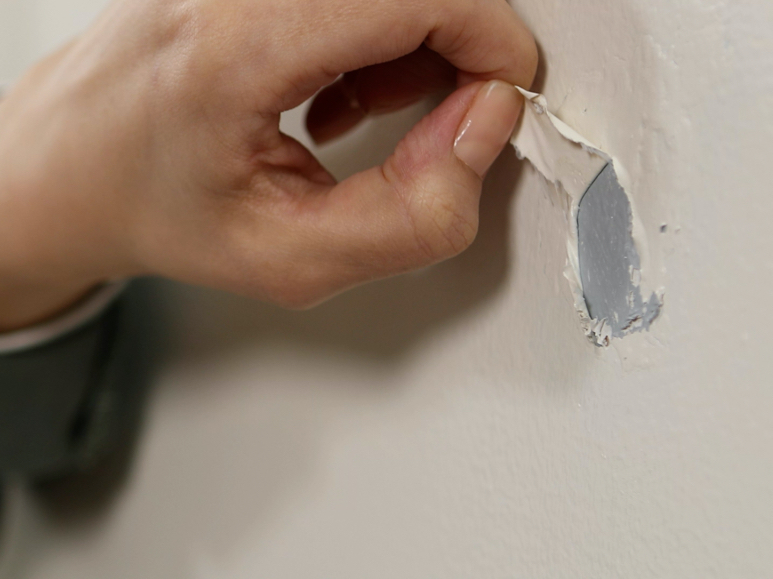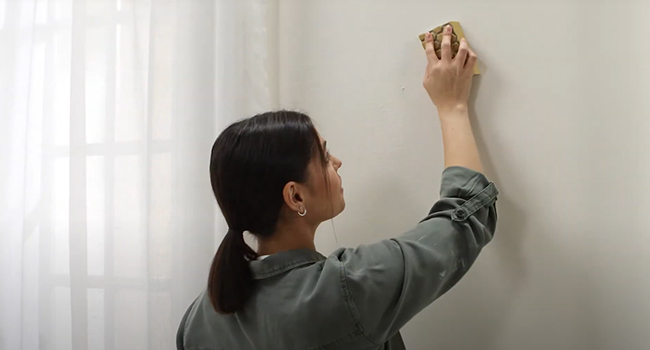Actual color may vary from on-screen representation.
JUMP TO SECTION:
CRACKS AND SMALL HOLES
For repairing cracks or small holes, start out by using a coarse-grit sandpaper to remove fragments around the crack or hole and sand down lightly. Then, clean the area with a damp cloth. Next, use a putty knife to spread a thin layer of drywall patching compound into the area and let it dry. Depending on the patch compound, drying times vary.
Once dry, smooth the patched area with a fine-grit sandpaper until flush with the wall, and remove any dust with a damp rag. Then, you’re ready to paint.

PEELING PAINT AND POOR PAINT ADHESION
Whether you’re mending paint peels or poor paint adhesion, the fix is practically the same. Most adhesion issues are caused by improper priming, paint, or application.
To fix it, start by using a paint scraper to remove any flakes, peels, or old, loose paint from the surface. Then with a putty knife, cover the area with spackle and allow it to dry. Next, sand the area with a fine-grit sandpaper until it is flush with the wall. Then, simply wipe away any debris. Once that’s done, you’re ready to repaint the area.
PAINT DRIPS
To get rid of paint drips, start by lightly scraping or chipping away at the drop with a sharp scraper until it is fairly even with the wall. Then, sand it down with a fine-grit sandpaper until the surface is level and smooth. Now, all you need is a little paint to finish the job.

MILDEW
Removing mildew is a bit more involved, but it’s very important to address. You can effectively remove mildew or mold from the walls with a bleach and water solution.
First, assess the condition of the wall. If it is beyond recovery, then it must be replaced. If you’re unsure, ask a professional. Mold left untreated can be extremely harmful to everyone in your home.
If the wall surface is still functional, you should be able to remove the spots with a bit of effort. Prep the area by covering the floor and nearby surfaces. Use a drop cloth and use tape to secure it in place. Mix a solution of one part bleach to three parts water. Then, scrub away with an old rag.
When you’re finished, it’s common to see leftover stains from the mold or mildew. We recommend using primer to cover the stain before you start painting.

WATER STAINS
Before attempting to fix a water stain, make sure that the water or leaking issue has been resolved. Then, start by scrubbing with a solution of one part bleach to three parts water. Wait until the affected area is as dry as possible. We recommend using a dehumidifier if you can.
Once dry, apply an appropriate primer to completely cover the stained area. Once that’s done, you’re ready to apply your paint. We recommend applying a second coat of paint to make sure the stain is completely covered.
TOUCH-UPS
Walls naturally wear down in a lived-in space, so it’s normal for them to need small touch-ups here and there. Prep the area, and then apply paint to the spot by feathering in the paint to ensure blending. If it’s the same paint, it may look different while it’s wet, but it should dry to the same color.
For more info on touch-ups, check out our touch-ups how-to.


